How to match subwoofers and amplifiers
Find the right amp for your sub or sub for your amp
The secret to great bass is making sure your subwoofers and amp are evenly matched and will properly work together. And this article will help you figure out how to do just that — match amplifiers and subwoofers.
G
etting the right sub for an amp, or the right amp for a sub, is like solving a puzzle. A subwoofer has impedance (measured in ohms) which represents the "load" an amplifier will sense on its output. An amplifier will put out different amounts of power (watts RMS) based on the impedance load it "sees."
Solving the puzzle
The amplifier's capabilities (X watts RMS into Y ohms) needs to match the subwoofer's specifications (Y ohms and can handle X watts RMS). Your goal is to get those two variables to match for both the amplifier and the subwoofer.
Below, we cover the important basics of power-matching, impedance, and planning for the number of subs you want, and we approach the situation from both sides of the system:
- Part A: You have the subs, which amp should you get?
- Part B: You have the amp, which subs should you get?
- And also, Part C: You have neither amp nor sub, and want help deciding how to begin.
Start with either part of this article you want, but A and B are both worth a read.
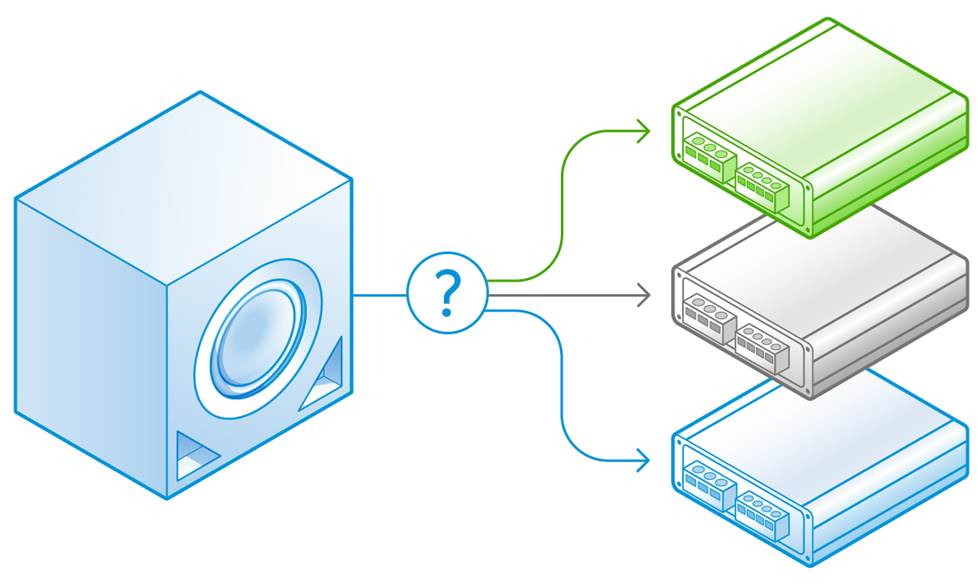
Part A — You have the subs, which amplifier should you get?
When you already have a subwoofer or two, you need to find an amplifier that will give them they power they need to deliver the bass you want.
The subwoofers need to be the same
Multiple subs wired together must be the same coil type and impedance. If they’re not, the power won’t divide evenly between them, and some subs would probably be over-powered while others get under-powered. If you want to run different types of subs in a system, each type needs to have its own separate amp.
Step 1: How much power? Find out the “watts RMS” rating of the sub
Then, multiply the number of subs you have by the RMS rating of each, to get their total RMS rating. You want to make sure the amp you choose will supply no more than the sub system’s total RMS rating.
Step 2: What impedance? The results of combining coils and subs
Figure out the possible total impedance(s) that the subs can be wired together to form.
SVC = A subwoofer with a single voice coil. It has only one pair of terminals.
DVC = A subwoofer with a dual voice coil. It has two pairs of terminals.
- 1 SVC 2-ohm sub can only have 2 ohms of impedance
- 1 SVC 4-ohm sub can only have 4 ohms of impedance
- 1 DVC 2-ohm sub can have 1 ohm or 4 ohms of impedance
- 1 DVC 4-ohm sub can have 2 ohms or 8 ohms of impedance
- 2 SVC 2-ohm subs can have 1 ohm or 4 ohms of impedance
- 2 SVC 4-ohm subs can have 2 ohms or 8 ohms of impedance
- 2 DVC 2-ohm subs can have 1/2 ohm, 2 ohms, or 8 ohms of impedance
- 2 DVC 4-ohm subs can have 1 ohm, 4 ohms, or 16 ohms of impedance
For more combinations of subs and their impedances, see Subwoofer Wiring Diagrams.
Step 3: Pick an amp that can do both — X watts at Y ohms
Look for an amplifier that can put out power up to the RMS wattage you’ve figured in Step 1, at an impedance load the subs can be wired to form, from Step 2.
Estimating amp power at the odd impedance values:
- 8 ohms — figure on the amp putting out half the power it would at 4 ohms
- 6 ohms — figure on the amp putting out three-quarters of the power it would at 4 ohms
- 3 ohms — figure on the amp putting out the average of what it would at 2 ohms and at 4 ohms
- 2.7 ohms — figure the same as for 3 ohms, and add a few watts
- 1.3 ohms — use the 1-ohm spec and take away a few watts
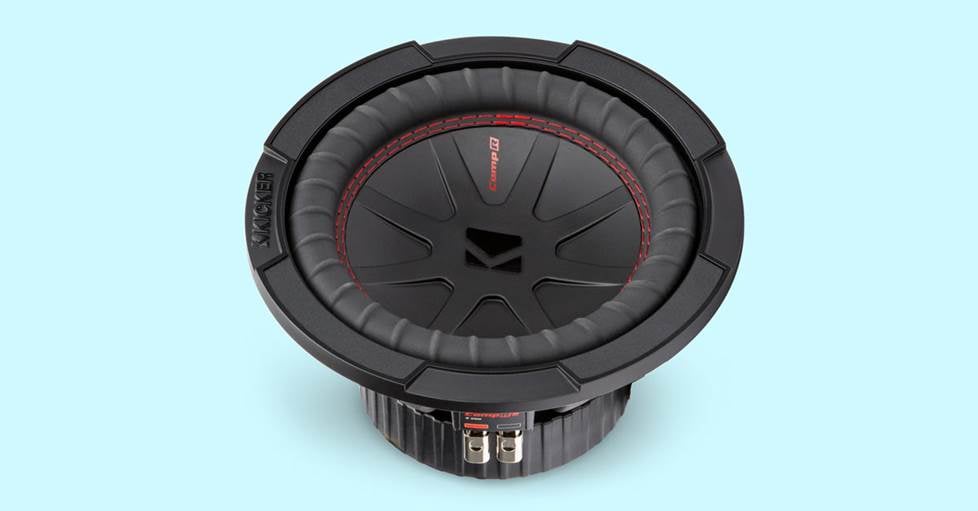
Example: Finding an amp for your subs
You have two Kicker CompR 8" subwoofers and you want the right amp for them.
- They are DVC 4-ohm subs rated at 300 watts RMS each.
- Two 300 watts RMS subs together need a maximum total of 600 watts RMS.
Using the chart in Step 2, 2 DVC 4-ohm subs can be wired together to form a 1-ohm, a 4-ohm, or a 16-ohm load.
The last is too high a load to be practical, so you’ll look for an amp that can put out up to 600 watts RMS into either a 4-ohm load, or a 1-ohm impedance load:
- up to 600 watts RMS x 1 at 4 ohms, or
- up to 600 watts RMS x 1 at 1 ohm
Among Crutchfield’s selection of amplifiers you’ll find:
- Kicker 46CXA1200.1T — 600 watts RMS x 1 at 4 ohms
- JL Audio JD1000/1 — 600 watts RMS x 1 at 4 ohms
- Kicker KEY500.1 — 500 watts RMS x 1 at 1 ohm
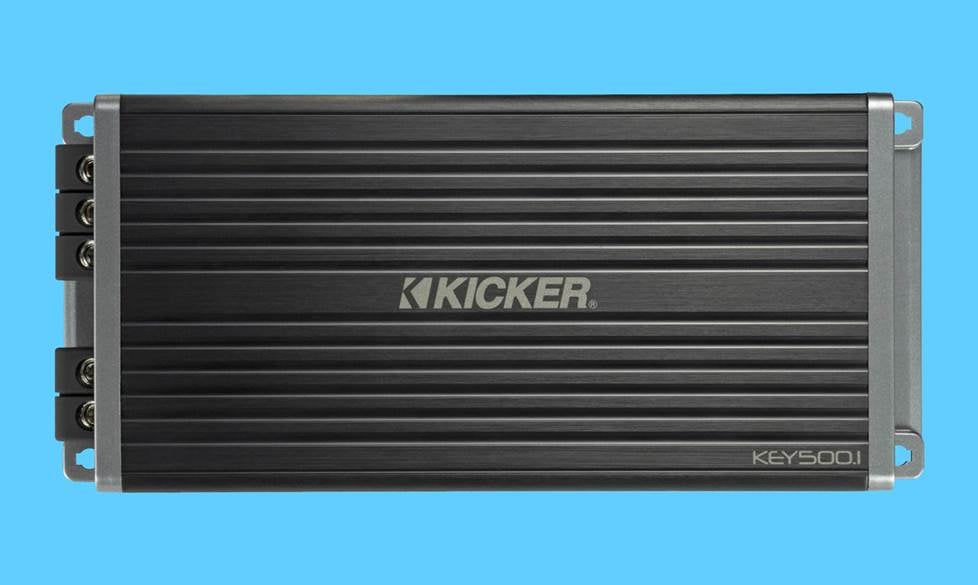
Kicker KEY500.1 subwoofer amplifier
Any one of these high-quality amplifiers would work well with those subs. It doesn’t matter which impedance an amp plays through — 600 watts RMS through a 4-ohm load produces the same volume as 600 watts RMS through a 1-ohm load.
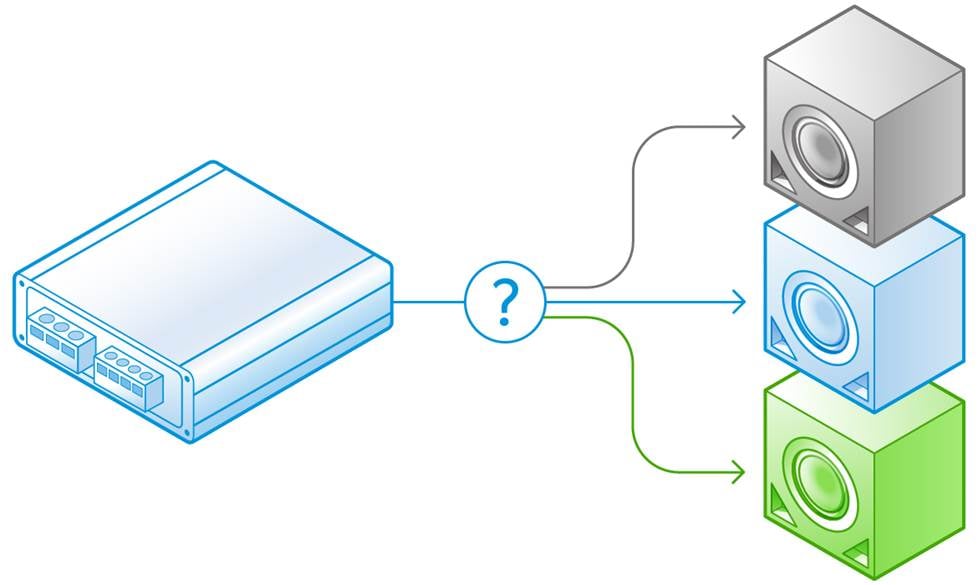
Part B — You have the amplfier, which subs should you get?
If you already have an amplifier, you need to find a subwoofer (or two) that will be a good fit for the power it can deliver.
Step 1: What can the amp do? Find the RMS power ratings of the amp at different loads
Find the amp’s power, expressed in “watts RMS”, at 4 ohms, at 2 ohms, and, if it can, at 1 ohm. Pick the power you’d like to achieve. The load impedance (ohms) of that rating will be what you want your subs’ total impedance to be.
Step 2: How many subs do you want?
Divide the power you picked in Step 1 by the number of subs you want. This number is the target RMS rating for each of the subs you’ll choose.
Step 3: What impedance does each sub need to be and how many voice coils?
Using the impedance you picked in Step 1 and the number of subs from Step 2, cross-reference the possible coil configurations that you can use:
| 1-ohm | 2-ohms | 4-ohms | |
| 1 sub | DVC 2-ohms | SVC 2-ohms DVC 4 ohms | SVC 4-ohms DVC 2-ohms |
| 2 subs | SVC 2-ohms DVC 4-ohms | SVC 4-ohms DVC 2-ohms | SVC 2-ohms DVC 4-ohms |
| 3 subs | (1.3 ohms)* SVC 4-ohms DVC 2-ohms | (3 or 2.7 ohms)* DVC 2-ohms DVC 4-ohms | (6 ohms)* SVC 2-ohms DVC 4-ohms |
| 4 subs | SVC 4-ohms DVC 2-ohms | SVC 2-ohms DVC 4 ohms | SVC 4-ohms DVC 2-ohms |
Step 4: Pick a sub that works for both — (SVC or DVC) X-ohms, Y watts RMS)
Look for subs that are rated at the wattage you figured in Step 2, and are configured as you found in Step 3. This might sound confusing, so let's walk through an example and it'll make sense.
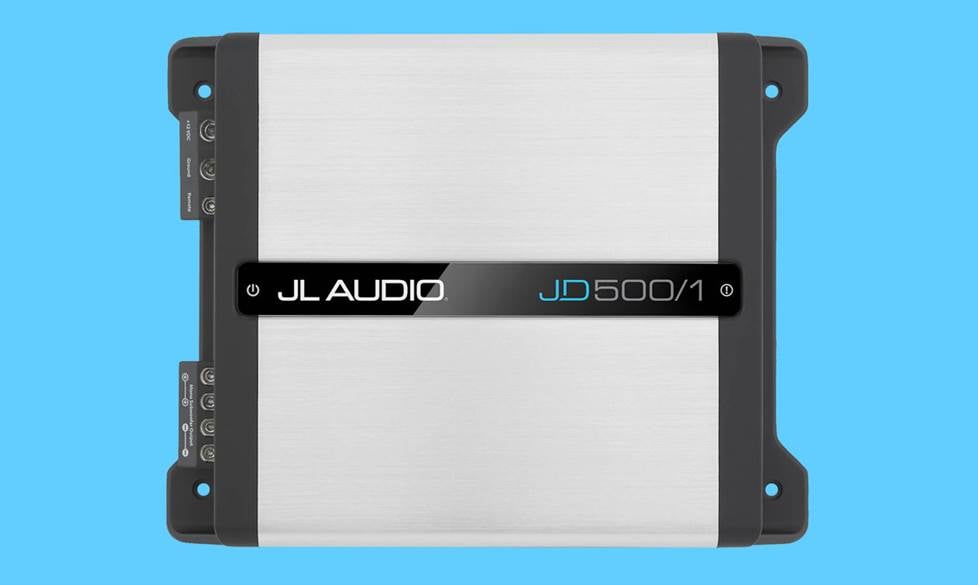
Example: Finding subs for your amplifier
You have a JL Audio JD500/1 amplifier and you want it to drive two subwoofers
- The amp is capable of 250 watts RMS x 1 at 4 ohms and 500 watts RMS x 1 at 2 ohms.
Let’s say you choose to maximize the amp’s potential and want the system to put out 500 watts RMS. This means your subs have to be wired to form a total impedance of 2 ohms.
Two subs on a 500 watts RMS amp will want about 250 watts RMS each.
So you’ll look for subs each rated for 250 watts RMS or more.
Using the chart in Step 3, for two subwoofers, a final 2-ohm load can be achieved with either two SVC 4-ohm subs or two DVC 2-ohm subs.
So, you’ll look for two subs that are either SVC 4-ohms or DVC 2-ohms, rated for at least 250 watts RMS each:
- 2 SVC 4-ohms, at least 250 watts RMS, or
- 2 DVC 2-ohms, at least 250 watts RMS
Among Crutchfield’s selection of subwoofers you’ll find:
- Alpine W10S4 10" — SVC 4-ohm, 250 watts RMS
- JL Audio 12W0v3-4 12" — SVC 4-ohm, 300 watts RMS
- Kicker 48CWRT82 8" — DVC 2-ohm, 300 watts RMS
- Rockford Fosgate R2D2-10 10" — DVC 2-ohm, 250 watts RMS
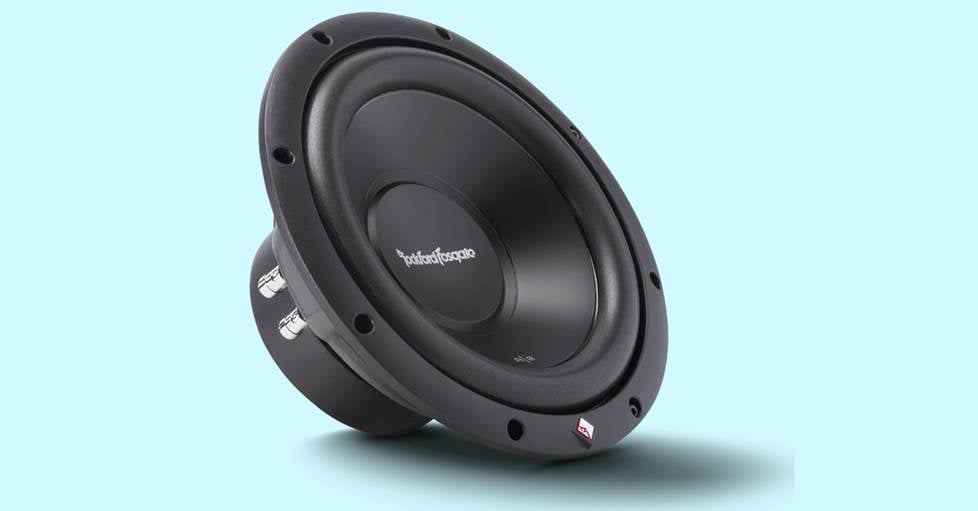
Rockford Fosgate R2D2-10 component subwoofer
All these subwoofers will sound their best when amplified with the proper amount of power. Differences in size have more to do with tonal qualities and frequency response than with power performance. And optimizing performance is the point of matching subs and amps together.
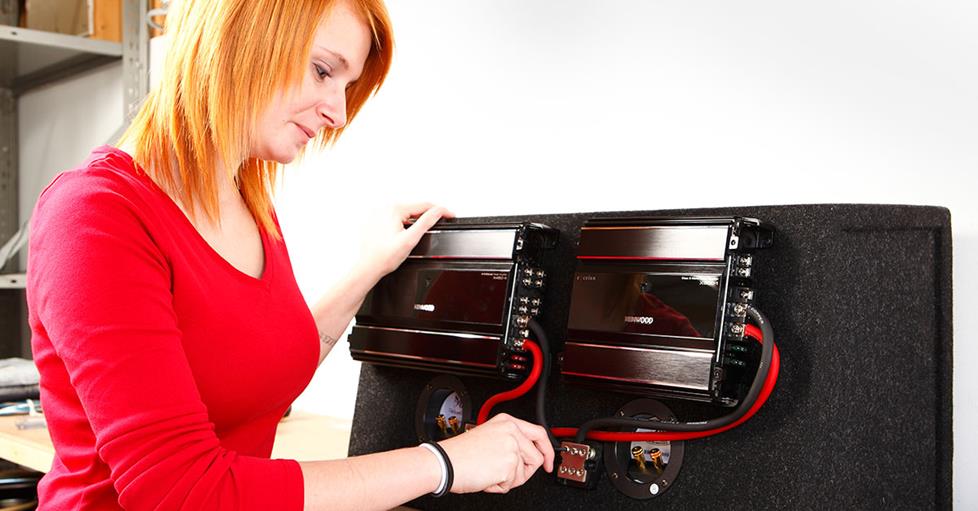
Part C — You have neither amp nor sub, and want help deciding how to begin
Check out our other article, All About Subwoofers to learn the basics of how much bass you need and how to choose your subwoofers.
And of course, if you have any questions, contact our expert advisors and they'll be happy to help you build your system.





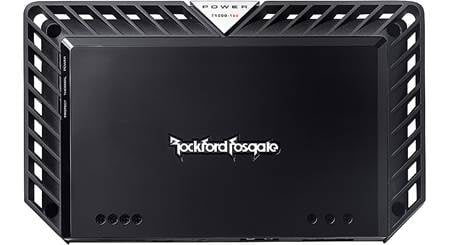
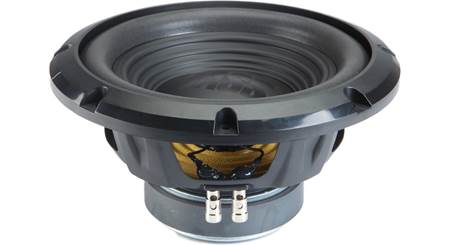
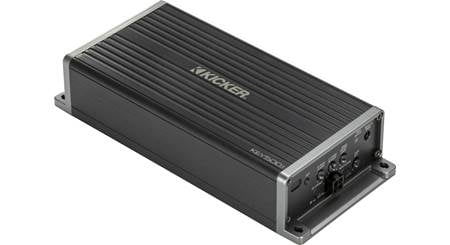
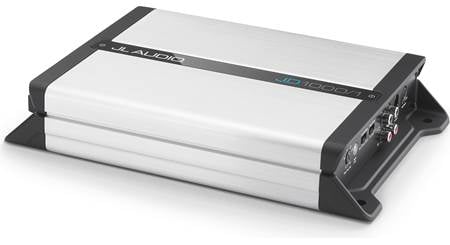
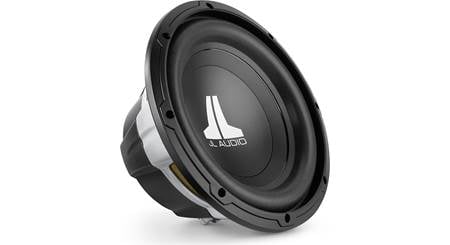
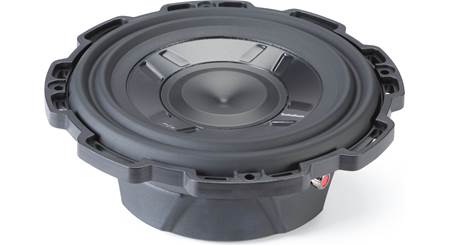



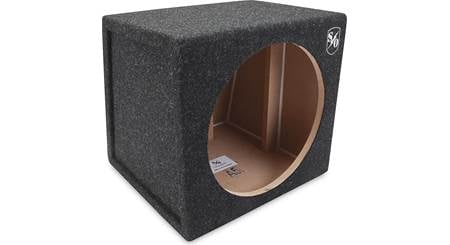
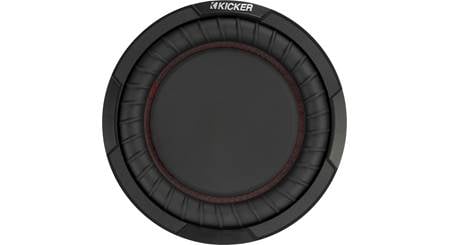

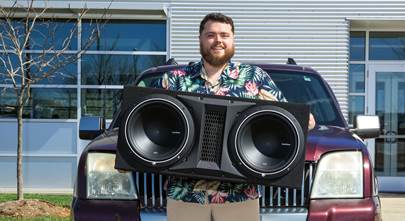
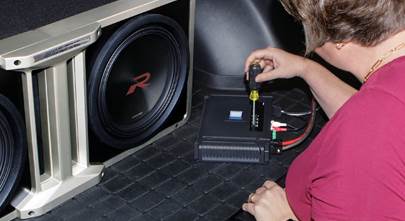
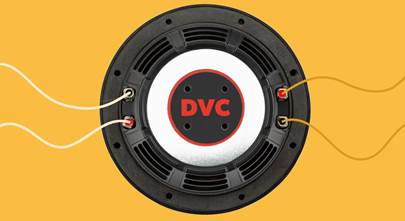
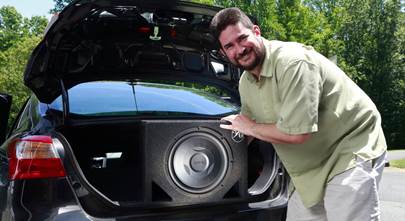
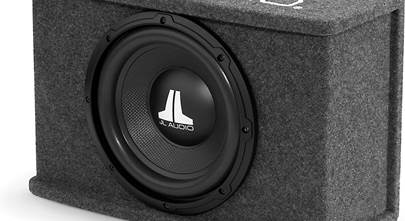
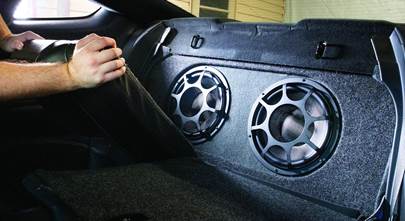
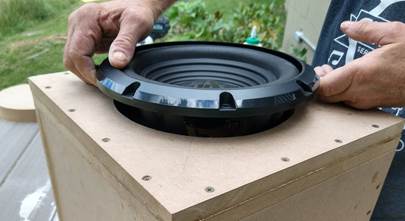
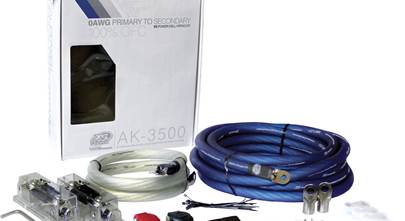
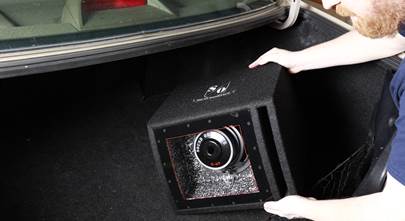
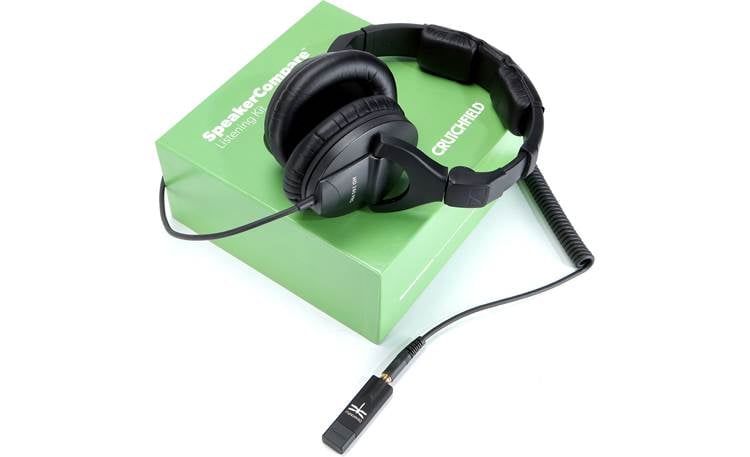
Tylar Bisnett
Posted on 2/23/2024
i am thinking about purchasing a rockford fosgate punch p1-2x10 loaded, vented enclosure, powered by a rockford fosgate r2-500x1 prime 500-watt mono amplifier with a rockford rfk4x 4 awg complete amplifier install kit. all of this will be going in my 2019 bmw 430i gran coupe which has the base factory stereo. i am looking to add more punch and clean, low-end bass to my sound system. do you think these will do the job?
Buck Pomerantz from Crutchfield
on 2/24/2024
Tylar Bisnett from Jacksonville
Posted on 2/23/2024
I am thinking about purchasing a rockford fosgate punch p1-2x10 loaded, vented enclosure, powered by a rockford fosgate r2-500x1 prime 500-watt mono amplifier with a Rockford rfk4x 4 awg complete amplifier install kit. all of this will be going in my 2019 bmw 430i gran coupe which has the base factory stereo. I am looking to add more punch and clean, low-end bass to my sound system. do you think these will do the job?
Buck Pomerantz from Crutchfield
on 2/24/2024
Cade
Posted on 1/2/2024
I have two of the DD Audio SL610 D4 10" Slim Shallow 1200W Dual 4-Ohm Car Subwoofer Speaker. What amp would be best for these subs.
Buck Pomerantz from Crutchfield
on 1/3/2024
Damian from Garrett
Posted on 12/15/2023
I want to get an 18 inch 2ohm 600 watt subwoofer. What amp should I get? And if I were to get a bigger and better amp what should it be?
Buck Pomerantz from Crutchfield
on 12/17/2023
kataki
Posted on 12/14/2023
I have a targa-dynamite-3500-1ohm stable-mono block that has a 450w at 1ohm and 300 at 2ohm Please assist which sub should i get
Buck Pomerantz from Crutchfield
on 12/14/2023
Reid
Posted on 12/13/2023
I have a Kenwood KAC-648S amplifier and I want to bridge two of the outputs to power a sub. The bridged RMS output is rated at 70 watts, and the max output is rated at 140. Thinking about getting a Kicker 43TC104 subwoofer, would it work with this amp or does the Kicker have too high of a power range?
Buck Pomerantz from Crutchfield
on 12/14/2023
mason vanicor from westlake
Posted on 12/6/2023
i have 2 jl 10tw3-d4 subs what would be a good amp to run them on?
Buck Pomerantz from Crutchfield
on 12/7/2023
Che from Clovis
Posted on 11/30/2023
I really appreciate all of the research that the company has done to help individuals with their stereo needs. A lot of these questions couldn't be answered by just standard individuals so I really appreciate all of your help thank you
Wilf
Posted on 11/27/2023
I currently have a Shok One amplifier 1000W RMS 1 OHM and looking for a single subwoofer setup. What would be the best subwoofer to pair this with?
Buck Pomerantz from Crutchfield
on 11/28/2023
Julian Castaneda from Rancho Cucamonga
Posted on 11/13/2023
Current amp I have : DB Drive A71100.1 Okur A7 Series Class D Mono Amplifier 1100W max 550W x 1 @ 2 Ohm 1100W x 1 @ 1 Ohm Want to purchase: Sundown Audio SA-12 V.2 D2 12" Dual 2 OHM 1000W RMS SUBWOOFER BASS Speaker New Would I get maximum sound and quality ? Advise please
Buck Pomerantz from Crutchfield
on 11/13/2023